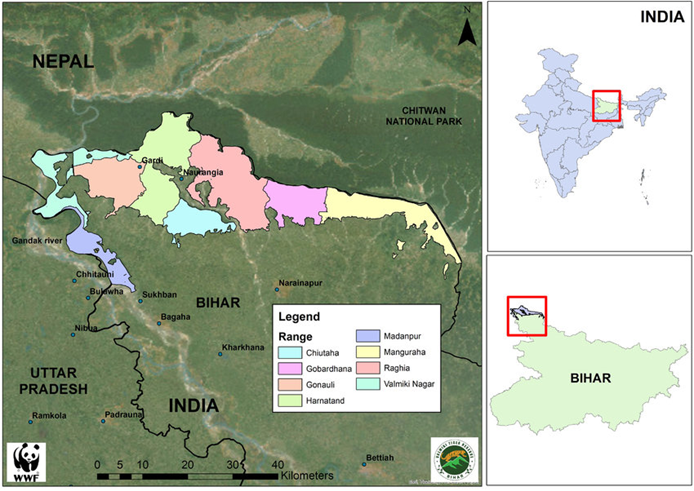- Courses
- GS Full Course 1 Year
- GS Full Course 2 Year
- GS Full Course 3 Year
- GS Full Course Till Selection
- Online Program
- GS Recorded Course
- NCERT (Recorded 500+ Hours)
- Polity Recorded Course
- Geography Recorded Course
- Economy Recorded Course
- AMAC Recorded Course
- Modern India, Post Independence & World History
- Environment Recoded Course
- Governance Recoded Course
- Science & Tech. Recoded Course
- International Relations and Internal Security Recorded Course
- Disaster Management Module Course
- Ethics Recoded Course
- Essay Recoded Course
- Current Affairs Recoded Course
- CSAT
- 5 LAYERED ARJUNA Mentorship
- Public Administration Optional
- ABOUT US
- OUR TOPPERS
- TEST SERIES
- FREE STUDY MATERIAL
- VIDEOS
- CONTACT US
Increased Tiger Numbers in Valmiki Tiger Reserve
Increased Tiger Numbers in Valmiki Tiger Reserve
26-12-2023
Context
- The National Tiger Conservation Authority (NTCA) officially confirms a rise in the tiger population at Valmiki Tiger Reserve (VTR). The number of big cats (Tiger) has risen from 31 in 2018 to 54 in 2023.
- Bihar government awaits NTCA approval to declare Kaimur Wildlife Sanctuary as the state’s second tiger reserve following VTR.
Reasons for Tiger Population Increase
- Total ban on sand and stone mining within VTR, strict restrictions on mining in its eco-sensitive zone resulted in increased grassland cover, supporting prey population and enhancing carnivores' survival chances.
- VTR focuses on managing and sustaining the tiger population.
- Initiatives include raising awareness among locals and monitoring mining activities to minimize human-wildlife conflict.
- NTCA categorizes the reserve as ‘Very Good.’

Valmiki Tiger Reserve (VTR)
- Unique Status: Only tiger reserve in Bihar which forms the easternmost extent of the Himalayan Terai forests in India.
- Geographical Location: Located in Bihar’s West Champaran district. Shares borders with Nepal to the north and Uttar Pradesh to the west.
- Bio-geographic Region: Positioned in the Gangetic plains bio-geographic region and exhibits a combination of Bhabar and Terai region vegetation.
- Forest Cover: Forest Survey of India Report 2021 indicates 85.71% forest cover in VTR.
- Wildlife Diversity: Diverse wild mammals, including tiger, sloth bear, leopard, wild dog, bison, wild boar, etc.
- River Presence: Rivers Gandak, Pandai, Manor, Harha, Masan, and Bhapsa traverse various parts of the reserve.
National Tiger Conservation Authority (NTCA)
- The National Tiger Conservation Authority (NTCA) is a statutory body operating under the Ministry of Environment, Forests, and Climate Change.
- Established in 2005 based on recommendations from the Tiger Task Force.
- Constituted under the Wildlife (Protection) Act, 1972, amended in 2006, with the aim of strengthening tiger conservation.
- Objectives:
- Provide statutory authority to Project Tiger, making compliance with its directives legally binding.
- Foster accountability between the Center and States in managing Tiger Reserves through MoUs within the federal structure.
- Enable Parliamentary oversight of tiger conservation efforts.
- Address livelihood interests of local communities around Tiger Reserves.
Eco Sensitive Zones (ESZs)
- ESZs are areas with significant environmental resources that demand special conservation attention. This includes landscapes, wildlife habitats, biodiversity-rich areas, and places of historical and natural importance.
- ESZs encompass a region of approximately 10 km around the boundaries of national parks and wildlife sanctuaries.
- State governments are mandated to declare ESZs under the provisions of The Environmental (Protection) Act, 1986.


